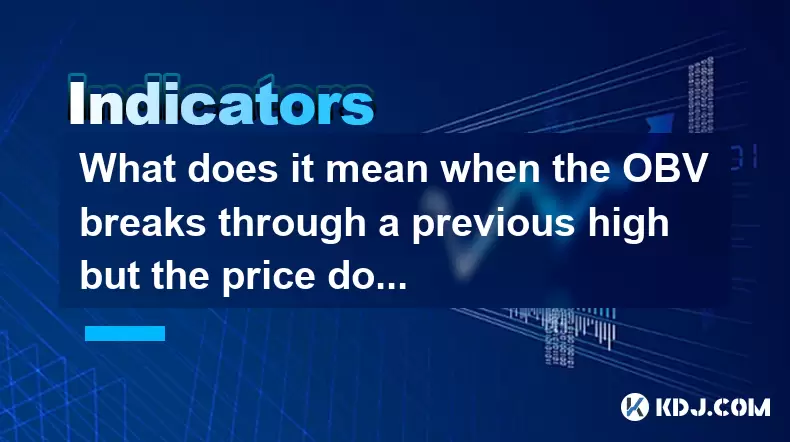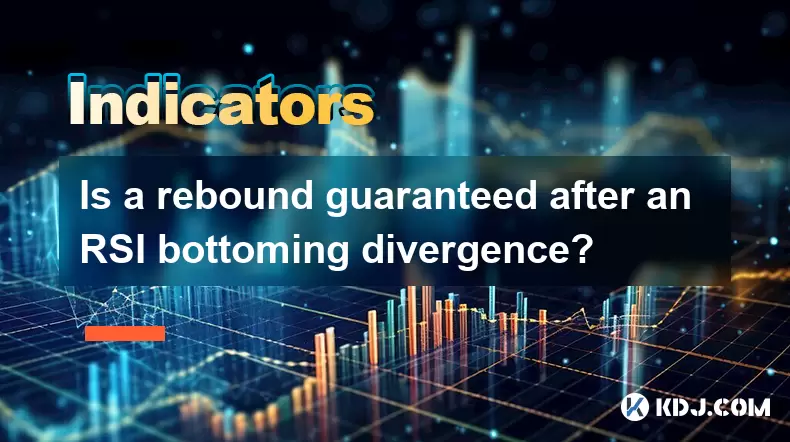-
 Bitcoin
Bitcoin $116700
0.24% -
 Ethereum
Ethereum $3973
4.34% -
 XRP
XRP $3.283
7.68% -
 Tether USDt
Tether USDt $1.000
0.01% -
 BNB
BNB $789.8
2.27% -
 Solana
Solana $176.2
3.31% -
 USDC
USDC $0.9999
0.00% -
 Dogecoin
Dogecoin $0.2238
5.14% -
 TRON
TRON $0.3389
-0.51% -
 Cardano
Cardano $0.7907
4.03% -
 Stellar
Stellar $0.4527
10.02% -
 Hyperliquid
Hyperliquid $41.07
4.27% -
 Sui
Sui $3.794
1.77% -
 Chainlink
Chainlink $19.49
10.40% -
 Bitcoin Cash
Bitcoin Cash $580.9
0.74% -
 Hedera
Hedera $0.2617
4.32% -
 Avalanche
Avalanche $23.41
3.67% -
 Ethena USDe
Ethena USDe $1.001
-0.03% -
 Litecoin
Litecoin $122.4
1.38% -
 Toncoin
Toncoin $3.364
1.49% -
 UNUS SED LEO
UNUS SED LEO $8.988
0.37% -
 Shiba Inu
Shiba Inu $0.00001295
2.82% -
 Uniswap
Uniswap $10.62
5.75% -
 Polkadot
Polkadot $3.922
4.46% -
 Dai
Dai $1.000
0.01% -
 Bitget Token
Bitget Token $4.494
2.15% -
 Monero
Monero $268.0
-1.30% -
 Cronos
Cronos $0.1523
3.68% -
 Pepe
Pepe $0.00001127
4.43% -
 Aave
Aave $285.4
4.85%
Is it necessary to stop loss after three crows? Is it a trend reversal or a technical correction?
Three crows in crypto trading signal a bearish reversal, but whether to stop loss depends on risk tolerance and market context.
Jun 02, 2025 at 02:15 am

Is it necessary to stop loss after three crows? Is it a trend reversal or a technical correction?
The pattern known as "three crows" is a bearish reversal pattern in technical analysis, often observed in cryptocurrency trading. This pattern consists of three consecutive long-bodied candlesticks that close lower than the previous day, each opening within the body of the previous candlestick and closing near its low. Traders frequently debate whether encountering this pattern should prompt a stop loss, and whether it signifies a trend reversal or merely a technical correction.
Understanding the Three Crows Pattern
The three crows pattern is a significant indicator used by many traders to predict potential bearish reversals. When this pattern appears after a prolonged uptrend, it suggests that the market sentiment may be shifting towards a bearish outlook. The pattern's formation involves:
- Three consecutive bearish candlesticks
- Each candlestick opening within the body of the previous candlestick
- Each candlestick closing near its low, indicating strong selling pressure
Necessity of Stop Loss After Three Crows
Whether to implement a stop loss after encountering three crows depends on various factors, including the trader's risk tolerance, trading strategy, and the broader market context. Here are some considerations:
- Risk Management: Implementing a stop loss can protect a trader's capital from significant losses if the market continues to decline.
- Market Context: If other indicators also suggest a bearish reversal, a stop loss might be more justified.
- Trading Strategy: Some traders might use a trailing stop loss to lock in profits while allowing for potential market fluctuations.
Three Crows as a Trend Reversal
The three crows pattern is often interpreted as a signal of a trend reversal. This interpretation is based on the following observations:
- Strong Selling Pressure: The pattern indicates that sellers are dominating the market, potentially leading to a sustained downward trend.
- Confirmation from Other Indicators: If other technical indicators, such as moving averages or the Relative Strength Index (RSI), also suggest a reversal, the likelihood of a trend change increases.
- Volume Analysis: Higher trading volumes accompanying the three crows can reinforce the bearish reversal signal.
Three Crows as a Technical Correction
Alternatively, the three crows pattern might be indicative of a technical correction rather than a full trend reversal. This scenario can be identified through:
- Subsequent Price Action: If the price quickly recovers after the three crows pattern, it might suggest a correction rather than a reversal.
- Broader Market Trends: If the overall market trend remains bullish, the three crows might represent a temporary pullback.
- Support Levels: If the price finds strong support after the pattern, it could indicate a correction rather than a sustained reversal.
Implementing a Stop Loss Strategy
If a trader decides to implement a stop loss after three crows, the following steps can be followed:
- Identify the Pattern: Confirm the presence of three consecutive bearish candlesticks meeting the criteria of the three crows pattern.
- Determine the Stop Loss Level: Set the stop loss just above the highest high of the three crows pattern to minimize potential losses.
- Monitor Other Indicators: Use additional technical indicators to confirm the bearish signal before executing the stop loss.
- Adjust the Stop Loss: Consider using a trailing stop loss to adapt to market movements and protect profits.
Analyzing the Market Context
To better understand whether the three crows pattern indicates a trend reversal or a technical correction, traders should consider the broader market context. This involves:
- Trend Analysis: Examine the long-term and short-term trends to determine if the three crows pattern aligns with a potential reversal or correction.
- Technical Indicators: Utilize indicators such as the Moving Average Convergence Divergence (MACD), RSI, and Bollinger Bands to gain additional insights.
- Fundamental Analysis: Consider any recent news or events that could influence market sentiment and price movements.
Case Studies of Three Crows in Cryptocurrency
Analyzing real-world examples of the three crows pattern in the cryptocurrency market can provide valuable insights. Here are a few case studies:
- Bitcoin (BTC) in 2021: After a prolonged uptrend, Bitcoin exhibited a three crows pattern in May 2021. This pattern preceded a significant price drop, suggesting a trend reversal.
- Ethereum (ETH) in 2020: Ethereum experienced a three crows pattern in March 2020, followed by a sharp decline. However, the price quickly recovered, indicating a technical correction rather than a sustained reversal.
- Litecoin (LTC) in 2019: Litecoin's three crows pattern in August 2019 was followed by a period of consolidation, suggesting a temporary correction within a broader bullish trend.
Psychological Factors and Market Sentiment
Psychological factors play a crucial role in interpreting the three crows pattern. Market sentiment can significantly influence whether the pattern leads to a trend reversal or a technical correction. Key considerations include:
- Fear and Greed: If fear dominates the market, the three crows pattern may lead to a rapid sell-off and a trend reversal.
- Trader Behavior: The actions of large traders and institutional investors can amplify the impact of the pattern.
- News and Events: Negative news or events can reinforce the bearish sentiment indicated by the three crows pattern.
Frequently Asked Questions
Q: Can the three crows pattern occur in different timeframes?
A: Yes, the three crows pattern can be observed across various timeframes, from intraday charts to weekly or monthly charts. The significance of the pattern may vary depending on the timeframe, with longer timeframes often indicating more substantial trend reversals.
Q: How can traders differentiate between a three crows pattern and a simple downtrend?
A: To differentiate between a three crows pattern and a simple downtrend, traders should look for the specific characteristics of the three crows, such as consecutive bearish candlesticks opening within the body of the previous candlestick and closing near their lows. A simple downtrend may lack these precise criteria.
Q: Are there any other bearish reversal patterns that traders should be aware of?
A: Yes, other bearish reversal patterns include the evening star, bearish engulfing, and dark cloud cover. Each of these patterns has unique characteristics and can provide additional signals for traders to consider alongside the three crows pattern.
Q: How can traders use the three crows pattern in conjunction with other technical analysis tools?
A: Traders can use the three crows pattern in conjunction with other technical analysis tools by confirming the bearish signal with indicators such as the RSI, MACD, and volume analysis. Combining multiple indicators can increase the reliability of the trading signal and help traders make more informed decisions.
Disclaimer:info@kdj.com
The information provided is not trading advice. kdj.com does not assume any responsibility for any investments made based on the information provided in this article. Cryptocurrencies are highly volatile and it is highly recommended that you invest with caution after thorough research!
If you believe that the content used on this website infringes your copyright, please contact us immediately (info@kdj.com) and we will delete it promptly.
- Navigating the Crypto Market in 2025: Smart Decisions for the Meme Supercycle
- 2025-08-09 08:50:12
- DeFi, Tokenized Stocks, and NFTs: A Wild Ride in the Crypto Cosmos
- 2025-08-09 08:30:11
- AERO Price Skyrockets: Aerodrome Finance Sees Massive Surge Amid Coinbase Buzz
- 2025-08-09 08:55:19
- Coinbase, Cosmos, and dYdX: Navigating the Crypto Currents
- 2025-08-09 06:30:16
- BNB Price, Altcoins, and Predictions: What's the Buzz?
- 2025-08-09 06:30:16
- Crypto Presale Projects Primed for Gains in 2025: A New Yorker's Take
- 2025-08-09 06:50:15
Related knowledge

When the J line in the KDJ indicator suddenly turns downward after being continuously overbought, does it indicate a top?
Aug 09,2025 at 06:35am
Understanding the KDJ Indicator and Its ComponentsThe KDJ indicator is a momentum oscillator widely used in cryptocurrency technical analysis to ident...

What does it mean when the TRIX indicator suddenly diverges downward after a long period of convergence?
Aug 09,2025 at 12:56am
Understanding the TRIX Indicator in Cryptocurrency TradingThe TRIX indicator, or Triple Exponential Average, is a momentum oscillator used in technica...

What does it mean when the OBV breaks through a previous high but the price doesn't reach a new high?
Aug 09,2025 at 07:57am
Understanding the On-Balance Volume (OBV) IndicatorThe On-Balance Volume (OBV) is a technical analysis indicator that uses volume flow to predict chan...

Why is the rise limited after a MACD bottoming divergence?
Aug 09,2025 at 12:07am
Understanding MACD Bottoming Divergence in Cryptocurrency TradingThe MACD (Moving Average Convergence Divergence) is a widely used technical indicator...

What does it mean when the OBV continues to rise but the price is trading sideways?
Aug 08,2025 at 10:35pm
Understanding On-Balance Volume (OBV)On-Balance Volume (OBV) is a technical indicator that uses volume flow to predict changes in stock or cryptocurre...

Is a rebound guaranteed after an RSI bottoming divergence?
Aug 09,2025 at 08:42am
Understanding the Role of Private Keys in Cryptocurrency SecurityIn the world of cryptocurrency, private keys are the cornerstone of ownership and sec...

When the J line in the KDJ indicator suddenly turns downward after being continuously overbought, does it indicate a top?
Aug 09,2025 at 06:35am
Understanding the KDJ Indicator and Its ComponentsThe KDJ indicator is a momentum oscillator widely used in cryptocurrency technical analysis to ident...

What does it mean when the TRIX indicator suddenly diverges downward after a long period of convergence?
Aug 09,2025 at 12:56am
Understanding the TRIX Indicator in Cryptocurrency TradingThe TRIX indicator, or Triple Exponential Average, is a momentum oscillator used in technica...

What does it mean when the OBV breaks through a previous high but the price doesn't reach a new high?
Aug 09,2025 at 07:57am
Understanding the On-Balance Volume (OBV) IndicatorThe On-Balance Volume (OBV) is a technical analysis indicator that uses volume flow to predict chan...

Why is the rise limited after a MACD bottoming divergence?
Aug 09,2025 at 12:07am
Understanding MACD Bottoming Divergence in Cryptocurrency TradingThe MACD (Moving Average Convergence Divergence) is a widely used technical indicator...

What does it mean when the OBV continues to rise but the price is trading sideways?
Aug 08,2025 at 10:35pm
Understanding On-Balance Volume (OBV)On-Balance Volume (OBV) is a technical indicator that uses volume flow to predict changes in stock or cryptocurre...

Is a rebound guaranteed after an RSI bottoming divergence?
Aug 09,2025 at 08:42am
Understanding the Role of Private Keys in Cryptocurrency SecurityIn the world of cryptocurrency, private keys are the cornerstone of ownership and sec...
See all articles

























































































